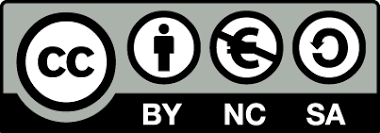| dc.contributor.author | สมิทธิ์ บุญชุติมา | th_TH |
| dc.contributor.author | Smith Boonchutima | th_TH |
| dc.contributor.author | สุดคนึง ฤทธิ์ฤาชัย | th_TH |
| dc.contributor.author | Sudkanueng Ritruechai | th_TH |
| dc.contributor.author | พิทักษ์พงษ์ จันทร์แดง | th_TH |
| dc.contributor.author | Pitukpong Jandang | th_TH |
| dc.contributor.author | ว่าน วิริยา | th_TH |
| dc.contributor.author | Wan Wiriya | th_TH |
| dc.date.accessioned | 2025-09-18T02:44:06Z | |
| dc.date.available | 2025-09-18T02:44:06Z | |
| dc.date.issued | 2568-09 | |
| dc.identifier.other | hs3300 | |
| dc.identifier.uri | http://hdl.handle.net/11228/6333 | |
| dc.description.abstract | การวิจัยนี้มีวัตถุประสงค์เพื่อพัฒนาและทดสอบประสิทธิภาพของหลักสูตรฝึกอบรมบุคลากรสาธารณสุขในการสื่อสารความเสี่ยงฝุ่น PM2.5 ตามหลัก Soft Power ในพื้นที่ชายแดน และสังเคราะห์ข้อเสนอเชิงนโยบายด้านรูปแบบและกำลังคนในการบูรณาการหลัก Soft Power เข้ากับการสื่อสารความเสี่ยง โดยศึกษากรณีจังหวัดตากซึ่งประสบปัญหาฝุ่น PM2.5 อย่างรุนแรง มีค่าเฉลี่ย 31.70 ไมโครกรัมต่อลูกบาศก์เมตร (มคก./ลบ.ม) และเคยบันทึกค่าสูงสุดถึง 592 มคก./ลบ.ม เกินมาตรฐาน 5 เท่า การวิจัยนี้ใช้ระเบียบวิธีวิจัยแบบผสมผสาน (Mixed-method Research) แบ่งเป็น 4 ขั้นตอน คือ 1) การศึกษาความรู้ ทักษะ และความต้องการ 2) การพัฒนาหลักสูตรฝึกอบรมฯ 3) การศึกษาผลการใช้หลักสูตร และ 4) การพัฒนานวัตกรรมหลักสูตร มีกลุ่มตัวอย่างบุคลากรสาธารณสุขและประชาชนในระดับประเทศ ระดับจังหวัด ระดับอำเภอ และระดับตำบล รวมจำนวนกว่า 1,600 คน ผลการศึกษาขั้นตอนที่ 1 พบว่า บุคลากรสาธารณสุขต้องการพัฒนาทักษะการใช้สื่อดิจิทัลและสื่อสังคมออนไลน์ (ค่าเฉลี่ย 4.04 จากคะแนนเต็ม 5 คะแนน) และเทคนิคการสื่อสารข้อมูลทางวิทยาศาสตร์ให้เข้าใจง่าย (ค่าเฉลี่ย 3.82 จากคะแนนเต็ม 5 คะแนน) ส่วนประชาชนมีความรู้พื้นฐานดี (ร้อยละ 85-ร้อยละ95) แต่การรู้ค่ามาตรฐาน PM2.5 ยังต่ำ (ร้อยละ 21.20-ร้อยละ 30.50) ผลการศึกษาขั้นตอนที่ 2 ได้หลักสูตรที่เน้นการใช้ Soft Power ได้แก่ การเล่าเรื่อง (Storytelling) สื่อสร้างสรรค์ การสร้างแรงบันดาลใจ การสร้างความผูกพัน และการใช้ภาษาที่เข้าใจง่าย โดยเน้นการใช้ผู้นำชุมชนที่เป็นที่เคารพนับถือ การใช้ภาษาและวัฒนธรรมท้องถิ่น และการสร้างสื่อที่เหมาะสมกับบริบทชุมชน โดยตำบลแม่กาษาและตำบลแม่กุ อำเภอแม่สอด จังหวัดตาก เป็นพื้นที่ทดลองการนำหลักสูตรไปใช้ ผลการศึกษาขั้นตอนที่ 3 พบว่า การใช้หลัก Soft Power ในการสื่อสารความเสี่ยงมีประสิทธิภาพ โดยสามารถเพิ่มจำนวนประชาชนที่มีความรู้ความเข้าใจจากร้อยละ 8.40 เป็นร้อยละ 27.00 (เพิ่มขึ้นร้อยละ 18.60 และเพิ่มพฤติกรรมการป้องกันตนเองจากร้อยละ 33.10 เป็นร้อยละ 57.80 (เพิ่มขึ้นร้อยละ 24.70) ภายในระยะเวลาเพียง 1 เดือนหลังการรณรงค์ ช่องทางการสื่อสารที่มีประสิทธิภาพสูงสุดคือ เสียงตามสาย/หอกระจายข่าว (ร้อยละ 58.90) รองลงมาคือ อาสาสมัครสาธารณสุขประจำหมู่บ้าน (ร้อยละ 24.10) และโปสเตอร์/ป้ายไวนิล (ร้อยละ 16.10) ผลการศึกษาขั้นตอนที่ 4 นวัตกรรมหลักสูตรฝึกอบรมฯ ที่พัฒนาขึ้นได้รับการประเมินจากผู้เชี่ยวชาญในระดับดีถึงดีมากในทุกมิติ โดยเฉพาะด้านความเป็นประโยชน์และความถูกต้อง การสังเคราะห์ข้อเสนอเชิงนโยบายด้านรูปแบบและกำลังคนในการบูรณาการหลัก Soft Power มุ่งเน้นการเสริมสร้างทักษะในการสื่อสารและการสร้างการมีส่วนร่วมในระดับพื้นที่ โดยใช้กลไกความร่วมมือระหว่างองค์กรปกครองส่วนท้องถิ่น และหน่วยงานสาธารณสุขในพื้นที่ ด้วยนโยบายและกลยุทธ์การสื่อสารความเสี่ยงของกระทรวงสาธารณสุข และหน่วยงานสาธารณสุขระดับจังหวัดและระดับอำเภอ การวิจัยนี้สรุปได้ว่า หลัก Soft Power มีศักยภาพสูงในการสื่อสารความเสี่ยงด้านสุขภาพ เนื่องจากสามารถสร้างการยอมรับ ปรับตัวตามบริบทท้องถิ่น และสร้างการเปลี่ยนแปลงที่ยั่งยืนจากภายใน ข้อเสนอแนะหลักคือ ควรขยายผลหลักสูตรนี้ไปยังพื้นที่อื่นที่มีปัญหาฝุ่น PM2.5 พัฒนาระบบสนับสนุนเพื่อความยั่งยืน และบูรณาการเข้าสู่ระบบการทำงานปกติของกระทรวงสาธารณสุขและหน่วยงานอื่นที่เกี่ยวข้อง | th_TH |
| dc.description.sponsorship | สถาบันวิจัยระบบสาธารณสุข | th_TH |
| dc.language.iso | th | th_TH |
| dc.publisher | สถาบันวิจัยระบบสาธารณสุข | th_TH |
| dc.rights | สถาบันวิจัยระบบสาธารณสุข | th_TH |
| dc.subject | ฝุ่นละออง | th_TH |
| dc.subject | Air Pollution | th_TH |
| dc.subject | มลพิษทางอากาศ | th_TH |
| dc.subject | คุณภาพอากาศ | th_TH |
| dc.subject | การสื่อสารความเสี่ยงด้านสุขภาพ | th_TH |
| dc.subject | การสื่อสารทางการแพทย์ | th_TH |
| dc.subject | การสื่อสารสาธารณสุข | th_TH |
| dc.subject | Risk Communication | th_TH |
| dc.subject | Health Risk Communication | th_TH |
| dc.subject | กำลังคนด้านสุขภาพ (Health Workforce) | th_TH |
| dc.subject | ภาวะผู้นำและการอภิบาล (Leadership and Governance) | th_TH |
| dc.title | สังเคราะห์ข้อเสนอเชิงนโยบายด้านรูปแบบและกำลังคนในการบูรณาการหลัก Soft Power กับการสื่อสารความเสี่ยง เพื่อป้องกันผลกระทบด้านสุขภาพจากปัญหาฝุ่น PM 2.5 ในพื้นที่ชายแดน | th_TH |
| dc.title.alternative | Policy Recommendations Synthesis on a Model and Health Workforce for Integrated Soft Power Principles That Utilize Risk Communication to Prevent Health Impacts from PM 2.5 in the Border Areas | th_TH |
| dc.type | Technical Report | th_TH |
| dc.description.abstractalternative | This research aimed to develop and test the effectiveness of a PM2.5 dust risk
communication curriculum using Soft Power principles for public health personnel in border areas,
with a case study in Tak Province, which severely suffers from PM2.5 pollution with an average
level of 31.70 μg/m³ and a recorded maximum of 592 μg/m³, exceeding standards by 5 times.
The research employed a mixed-methods approach divided into 4 phases: 1) studying
knowledge, skills, and needs; 2) developing training curriculum; 3) studying curriculum
implementation results; and 4) synthesizing policy recommendations. The study involved 1,600
public health personnel and community members across 4 levels: national, provincial, district and
subdistrict levels.
Phase 1 Results revealed that public health personnel needed to develop skills in using
digital media and social media (4.04/5) and techniques for communicating scientific information in
an accessible manner (3.82/5). Community members had good basic knowledge (85.00-95.00%) but
low awareness of PM2.5 standards (21.20-30.50%).
Phase 2 Results produced a curriculum using Soft Power principles: storytelling, creative
media, inspiration building, relationship building, and accessible language use. The development
emphasized utilizing respected community leaders, incorporating local language and culture, and
creating media appropriate for community contexts. Data collection was conducted in Mae Ku and
Mae Kasa sub-districts in Mae Sot District, Tak Province, with both areas serving as pilot sites for
curriculum implementation.
Phase 3 Results demonstrated that using Soft Power principles in risk communication
showed impressive effectiveness, increasing public knowledge and understanding from 8.40% to
27.00% (an increase of 18.60%) and enhancing self-protection behaviors from 33.10% to 57.80%
(an increase of 24.70%) within just 1 month after the campaign. The most effective communication
channels were village broadcasting systems/loudspeakers (58.90%), followed by village health
volunteers (24.1%), and posters/vinyl banners (16.10%).
Phase 4 Results the developed training curriculum innovation has been evaluated
positively by experts across various dimensions, particularly concerning its utility and accuracy. The
synthesis of policy recommendations regarding the format and personnel for integrating the Soft
Power framework emphasizes the enhancement of communication skills and community
engagement at the local level. This approach utilizes collaborative mechanisms between local
governance organizations and public health agencies, aligning with the policies and strategies of
the Ministry of Public Health, as well as provincial and district public health entities.
The research concludes that Soft Power principles have high potential for health risk
communication as they can create acceptance, adapt to local contexts, and generate sustainable
change from within. Key recommendations include expanding this curriculum to other areas with
PM2.5 problems, developing support systems for sustainability, and integrating it into the regular
operational systems of the Ministry of Public Health. | th_TH |
| dc.identifier.contactno | 67-171 | |
| dc.subject.keyword | PM2.5 | th_TH |
| dc.subject.keyword | ฝุ่นพิษ | th_TH |
| dc.subject.keyword | Soft Power | th_TH |
| .custom.citation | สมิทธิ์ บุญชุติมา, Smith Boonchutima, สุดคนึง ฤทธิ์ฤาชัย, Sudkanueng Ritruechai, พิทักษ์พงษ์ จันทร์แดง, Pitukpong Jandang, ว่าน วิริยา and Wan Wiriya. "สังเคราะห์ข้อเสนอเชิงนโยบายด้านรูปแบบและกำลังคนในการบูรณาการหลัก Soft Power กับการสื่อสารความเสี่ยง เพื่อป้องกันผลกระทบด้านสุขภาพจากปัญหาฝุ่น PM 2.5 ในพื้นที่ชายแดน." 2568. <a href="http://hdl.handle.net/11228/6333">http://hdl.handle.net/11228/6333</a>. | |
| .custom.total_download | 5 | |
| .custom.downloaded_today | 0 | |
| .custom.downloaded_this_month | 0 | |
| .custom.downloaded_this_year | 5 | |
| .custom.downloaded_fiscal_year | 2 | |


